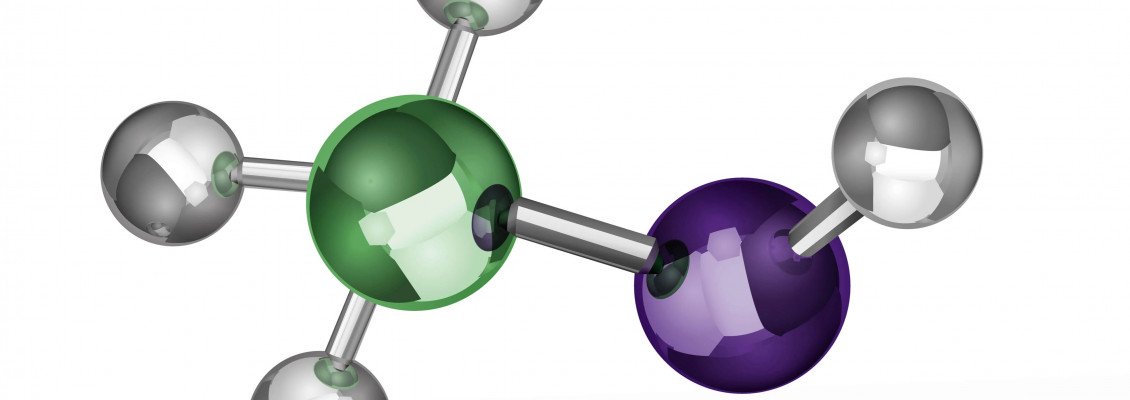
The use of hand-sanitizer in cleaning our hands is the best practice if there is an absence of water around. With the on-going threat and the magnitude of health risks of what we are facing right now, it’s important that whatever we touch, even with a simple handshake, applying of hand-sanitizer or washing of hands is our utmost priority.
Most sanitizers are alcohol-based products, thus, it heavily relied on the effectiveness of the alcohol. But what if the sanitizer could make us ill, instead of doing its purposes – cleaning and disinfection?
Recently, the FDA recalled 9 hand sanitizer brands in the market due to the methanol toxicity in its content. It was discovered that it contains methanol, a wood alcohol that can be toxic once absorbed by the skin or when it’s ingested inside our body.
WHAT IS METHANOL?
Methanol (CH₃OH) is a colorless liquid with a light alcoholic scent that is classified as a nondrinking type of alcohol, which is also known as wood alcohol and methyl alcohol. It is mainly used in creating solvents, fuel, pesticides, foams, adhesives, antifreeze, and as feedstock in producing chemicals such as formaldehyde and acetic acid. It’s known to be volatile, flammable, and poisonous to human consumption compared to ethanol.
Drinking even a 3.0 ounce of this industrial chemical is already fatal. That’s why it’s not advisable for human consumption, whether they mix or use it with alcoholic beverages.
PRIMARY USES OF METHANOL
The demand for new environmental fuel source is huge and grown exponentially worldwide over the course of years. That’s why the demand for methanol showed an increase in development and usage.
Methanol as fuel – Known as the heating fuel in Europe before the year 1900, it was obtained using the destructive distillation of wood. This industrial alcohol has a great impact on the automotive industry. It’s mixed in unleaded gasoline to give a smooth burning and better thermal efficiency in the engines.
Methanol as antifreeze agent – Ever wonder why the windshield never freezes? It’s because methanol has chemical properties that allow itself in lowering the freezing point of a water-based liquid as it increases its boiling point.
Methanol use in formaldehyde – The combustion of organic materials and natural and anthropogenic action forms the formaldehyde. Thus, it’s one of the most important compounds in the chemical industry. Methanol is converted into formaldehyde by catalytic phase oxidation over a catalyst of metal oxide.
Methanol in chemical product material – There are a lot of usages of methanol that we could find in the surroundings. It is used in synthetic fibers, film, and pharmaceuticals. In high-performance plastics and plywood.
HAND-SANITIZER AND METHANOL TOXICITY
The demand for sanitizers propelled when the world faced a pandemic that caused the death of many individuals, especially in health sectors. Almost every generation, a new type of disease emerges. Spanish flu, AIDS, Ebola Virus, Bubonic Plagues, SARS, MERS-CoV, and Covid-19 are just some of it. Alcohols, sanitizers, disinfectants, and purifiers have gained huge demands as it’s the readily available protection one can easily avail over the counter.
Recently, the FDA recalled an alcohol brand and alerted the consumers due to its finding that these alcohol brands tend to have methanol content rather than ethanol. Methyl alcohol is industrial alcohol that is toxic in human health. The misuse of this compound will lead to a severe health risk, and death if there is no immediate medication.
Methanol poisoning occurs when a person is exposed to methanol through inhalation, ingestion, eye, or skin contact. Since alcohol is rubbed on the surface of the skin and used as an antiseptic, it will likely be the common route for those who are affected. Although it will take some time before the toxic chemical will take effect, the deadliest route would be when methanol is ingested in the body.
SYMPTOMS OF METHANOL POISONING
Methanol’s toxicity is caused by its metabolic products. It is an acid accumulation that enters the bloodstream inside the body. Once exposed to methanol, the patient will undergo an asymptomatic period for 1 to 72 hours. This means that one cannot easily see the effect. It’s important that when someone is experiencing pain or discomfort, consulting a doctor is a must in order to avoid any complications.
These symptoms may appear differently in each person:
- Death
- Blindness
- Drowsiness
- CNS Depression
- Confusion
- Headache
- Dizziness
- Ataxia
- Nausea
- Vomiting
- Heart and Respiratory failure
- Eye irritation and redness
- Skin irritation

EXPOSURE CAUSE BY INGESTION
- Neurological – headache, amnesia agitation, coma, and seizure
- Gastrointestinal – Lack of appetite, nausea, vomiting, severe abdominal pain, gastrointestinal bleeding, liver abnormalities, and pancreatitis
- Ophthalmologic – Blurred vision, light sensitivity, visual hallucinations, partial to total vision loss, and rarely eye pain
- Others – Kidney failure, electrolyte imbalances, hematuria, rhabdomyolysis, tachycardia, bradycardia, hypotension, and respiratory arrest
METHANOL POISONING: TREATMENT AND IMMEDIATE RESPONSE
It is important to identify what brand of hand-sanitizer that the patient is using. That way, the doctor or medical specialist could easily determine the main source of the illness. In addition, having knowledge in first aid is also a vital part in order to easily detect and take precautionary steps to avoid contamination.
Antidote prescription. Antidotes such as ethanol and fomepizole are effective against methanol toxicity. It should be administered as soon as the person reached the hospital or clinic.
For eye contamination, immediately wash the affected area with tepid water for at least 15 minutes.
For ingestion, do not induce vomiting.
For inhalation, remove the patient immediately from the source, examine the respiratory function and pulse, administer oxygen if there is shortness of breath, assists ventilation, or provide artificial respiration.
For skin, use a decontamination method.
CDC ALCOHOL RECOMMENDATIONS AND HEALTH ADVISORY
There are guidelines that the CDC and FDA imposed on how much ethyl alcohol level should be included. To lessen any pandemic and contagious transmissions among the Americans, these guidelines are strictly implemented in any alcohol and hand-sanitizers.
CDC recommends 60-95% alcohol in healthcare products and facilities
The alcohol content in the product must be under this standard. This is because a higher concentration of alcohol could easily eradicate bacteria and viruses. Also, a higher concentration of alcohol inhibits the reproduction of microbes.
Washing of hands at least 20 seconds
Some campaigns are being implemented regarding the standard of washing of hands. The important factor is the washing of hands before eating and after using the toilet.
FDA Policy of Ethanol and Isopropyl as an active ingredient
Under any circumstances, FDA's guidance in the formulation must be consistently followed and adhered to in cooperation with the World Health Organization's Guidance.
CDC has no recommended alternative
Alcohol manufacturers should strictly follow that hand rub product should have a 60% ethanol and above contents, or 70% isopropanol contents, same with benzalkonium chloride.
OUR PRODUCT VS THE MARKET
The world has undergone a lot of health risks and took precautionary measures over the years. More discoveries and investigations conducted to further the study and increase the awareness of the people with these viruses and bacteria.
But what can we contribute to society? Hand sanitizers are there for an immediate portable solution. However, it is important that we adhere to the regulations of alcohol contents and we condemn the use of toxic products such as methanol by a few companies to profit from the pandemic or any health crisis.
Our product has been effective protection ever since the SARS outbreak. We only use the CDC approved ingredients and we never use methanol or any toxic chemicals that will harm the lives of many people. We are a brand that focuses on well-being, comfort, and promotes organic solutions that are both beneficial and eco-friendly.
With the methanol poisoning that occurred, we must know and trust the products that we use.
WE GUARANTEE THAT:
Our product has been proven effective by the American Journal of Infection ControlWe conducted several public and laboratory tests and our product proved to have lessened the cross-infection rate in hospitals, and public places minimizing the rate of transmission.
We passed the oral toxicity and skin allergy test conducted by SGS
Only some of the hand-sanitizers could eliminate all the bacteria and viruses on the surface items. Scented sprays can cause allergic reactions, and don’t guarantee all-day protection. We use 100% CDC and FDA approved materials.
Our product uses innovative technologies
TiO₂ Quantum Photocatalysis is the technology we use to ensure the level of antimicrobial solution and the latest in odor and TVOC removal that our competitors don’t have.
24-hour protection
Our solutions are crafted to give the kind of protection that many families want. Some products only give 12 or 16-hour of protection. But we make sure to protect each family even when they are sleeping.
CONCLUSION
Methyl alcohol is a toxic ingredient that is harmful to human consumption. Indeed, it has a lot of great contributions and usage in industrial and chemical settings. However, it’s important to create awareness against the harmful effects and disadvantages of this compound.
REFERENCES
